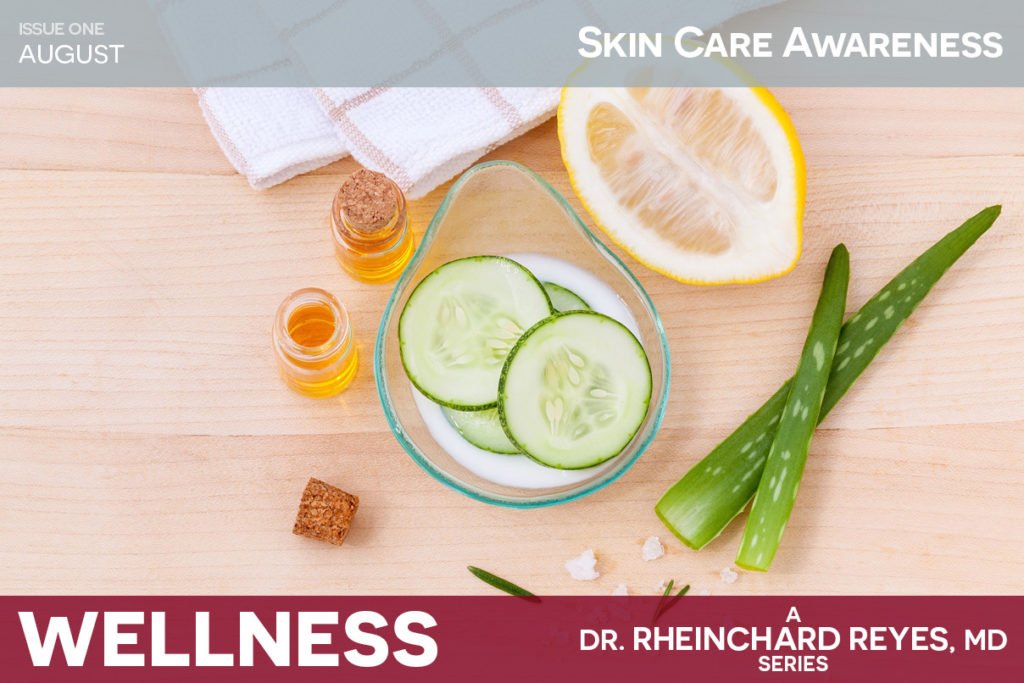Skin Facts
What is your body’s biggest organ?You may already know this, but it is an awesome fact.
If you are thinking skin, you are right!
The fun facts don’t stop there.
The skin of an average adult weighs 8 pounds (3.6 kg) and if you were to lay it flat, it would occupy 22 square feet (2 m2). Skin regenerates constantly. Approximately every 27 days you have new skin.
The Cosmetics Cop
Skin care is of utmost importance from both a health and lifestyle perspective. As all else in health, check with your physician first. Equipped with the tools for a healthier you, skin care starts with routine checkups and consultations at your primary care doctor’s office.
The medical profession is not impervious to sound information, recommendations, and research provided by numerous experts, even if they are lay people… as long as it’s an honest approach to scientific-based findings subject to peer-reviewed research. Coupled with a no frills communication style and whooping doses of common sense, we have found this to be the case with Paula Begoun and her non-profit, non-revenue blog ‘CosmeticsCop.com’. In her own words, her site “is intended to inform and challenge ideas, beliefs, and myths about beauty and beauty products in ways that can build self-esteem and confidence.”
Begoun is a talk radio host, a consumer advocate, and the self-published author of 18 books. She is a consultant for dermatologists, plastic surgeons, cosmetics companies, news, and industry insiders. She provides a 360-degree approach to cosmetics based on the unchallenged premise that the ‘beauty industry’ is not regulated. This means companies can essentially say whatever they want about a product without having to prove their claims. Alarms buzzing, right!?
“She starts with the history of the brand and ownership structure, then moves onto the brand’s philosophy and marketing. Finally, she writes up an exhaustive review of all the products sold and whether they stand up to their marketing claims,“ points out long-time subscriber and enthusiast Ana O. Blanco about Begoun’s method, insisting that she also gives great advice regarding “the packaging of beauty products, the chemical composition of ingredients, how and why they work, and what the order of ingredients means. She discusses why certain ingredients are not the be-all end-all that companies claim they are and why others are not the enemies the industry purports.”
Skin Care Pet Peeves and Recommendations from Paula Begoun
- Expensive is not better. Skin care can be affordable. In the cosmetic industry, expensive does not mean quality. In fact, often you are simply overpaying for exotic ingredients (or fancy packaging) that do nothing for the skin. There are excellent products in both department stores and supermarkets that are often manufactured by the same exact companies. They might sell the same product, with identical ingredients, under a different brand. You just have to make sure that the ingredients do what they are supposed to.
- Natural and organic products are not necessarily good for your skin. Wow, don’t we know this in the medical profession! Many natural ingredients are either too potent or bad for the skin —citruses, lavender, fragrance, essential oils— because they break down collagen, cause irritation, etc.
- Best skincare rule. Everybody’s skin is sensitive, so treat it that way and you won’t go wrong.
- Best way to avoid wrinkles and number 1 skin protection commandment? Other than having good genetics, avoid sun exposure. When out in the sun, wear make-up, creams or powder with SPF.
- If you have oily skin, don’t wear moisturizing creams, regardless of what salespeople might tell you.
- The best exfoliants are AHA o BHA products, not scrubs. In fact, scrubs can often be abrasive and tear the skin.
- Use a washcloth instead of a brush to apply and/or remove make-up or skin products.
- The best skin care routine should address the many layers of your skin. Absorption is not the magic word, rather how ingredients reach different layers of the skin.
- Top layer: You want ingredients to protect you from the sun’s harmful rays and maintain the skin’s moisture and silkiness (emollients).
- Sublayer 1: This is where hyaluronic acid and ceramides to do the trick.
- Sublayer 2: Antioxidants like retinol act here, actually changing how skin cells work.
- The deepest layer is for ingredients that restore the skin, like vitamin C, which helps with discoloration.
Sources:
http://cosmeticscop.com
https://www.youtube.com/watch?v=gTqKh6NDHlA
http://freshfiction.com/author.php?id=9908
https://www.emedicinehealth.com/human_body_quiz_iq/quiz.htm
https://www.nationalgeographic.com/science/health-and-human-body/human-body/skin/
https://en.wikipedia.org/wiki/Paula_Begoun
https://www.businessoffashion.com/articles/beauty/paulas-choice-beautypedia-the-original-internet-beauty-brand


